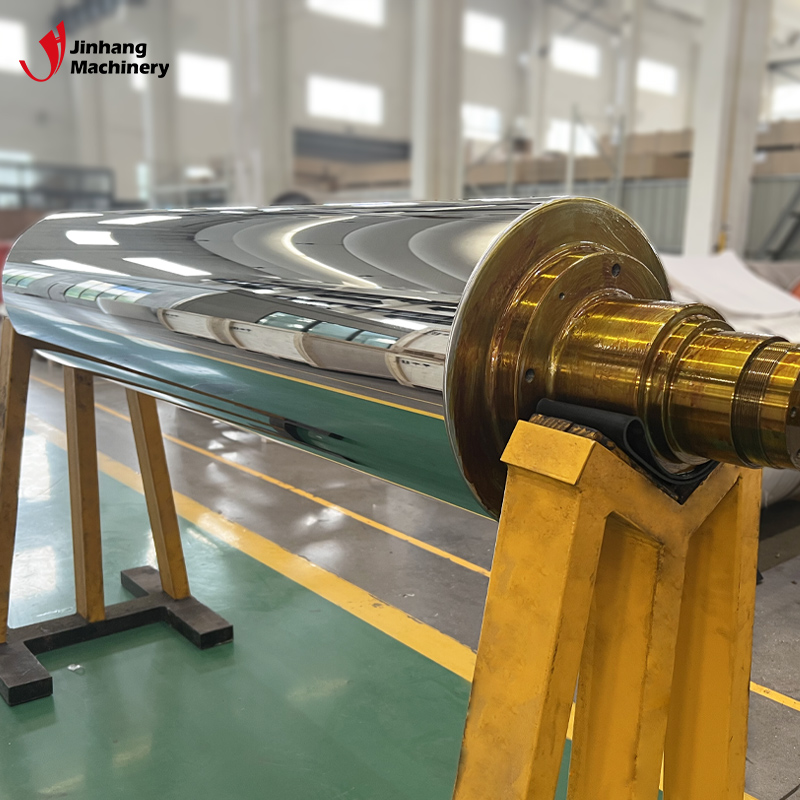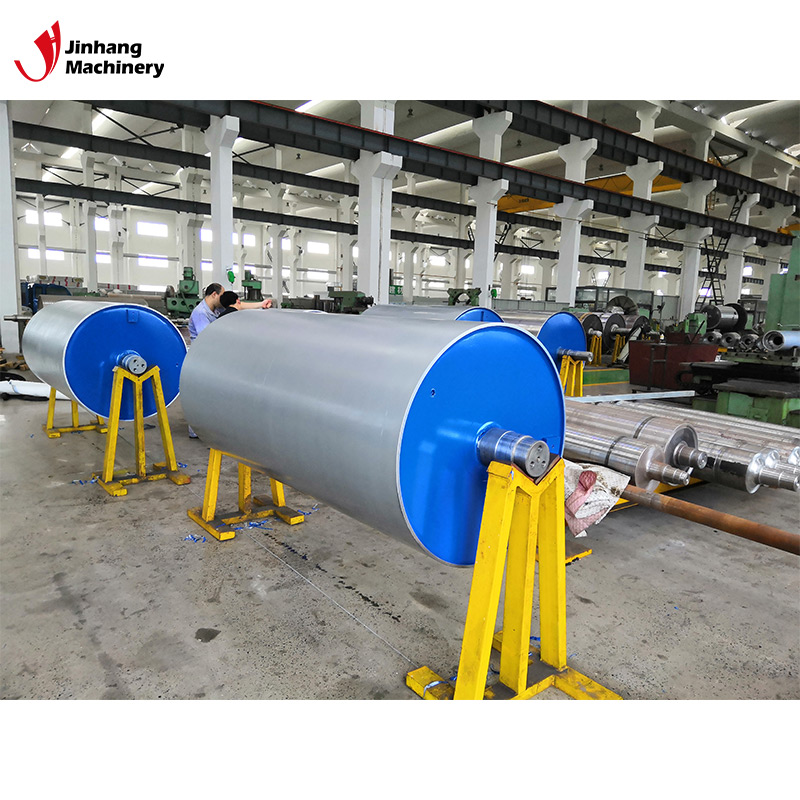What is a Laminating Roller? What are the uses of Laminating Rollers?
Laminating Rollers are one of the key equipment commonly found in many industries, especially in printing, packaging, textiles and electronics. Laminating Rollers play an indispensable role in the production process. They can cover the surface of materials with a layer of film, thereby improving the appearance, strength, durability and protection of the product.
This article will explore the definition, working principle, structural characteristics, wide application and important role of Laminating Rollers.

What is a Laminating Roller?
Laminating Rollers are mechanical devices used to adhere film materials to the surface of substrates. Through heating, pressure, gluing and other methods, Laminating Rollers can tightly combine materials such as plastic films, paper, metal foils and substrates. It usually consists of one or more pairs of rollers, which apply uniform pressure and temperature to the materials through rotation to complete the laminating operation.
Structure of Laminating Rollers
The structure of Laminating Rollers mainly includes the following parts:
● Roller body: usually made of high-strength steel or aluminum alloy, with good pressure resistance and wear resistance.
● Heating system: used to heat the roller body so that its surface reaches a temperature suitable for lamination.
● Pressure system: by adjusting the roller gap and pressure, the film and substrate are in close contact.
● Drive system: control the rotation speed and direction of the roller to ensure a uniform and stable lamination process.
● Control system: including temperature controller, pressure sensor and speed regulator, etc., used to accurately control various parameters in the lamination process.
What is the working principle of the laminating roller?
The working principle of the laminating roller is mainly based on the synergy of heating and pressure. During the lamination process, the roller surface is first heated to the required temperature by the heating system, and then the film material and the substrate are sent between the rollers together. The pressure applied by the roller makes the film fit closely with the substrate, and the heating softens the adhesive or plastic film and enhances its adhesion. After being processed by the laminating roller, the film material is firmly covered on the surface of the substrate, forming a uniform, smooth and strong protective layer.
The temperature and pressure of the laminating roller are important factors affecting the quality of lamination. If the temperature is too low, the adhesion between the film and the substrate is insufficient, and bubbles or peeling are easily generated; if the temperature is too high, the film may melt or the substrate may deform. Similarly, excessive pressure may damage the substrate, while too little pressure cannot form a good adhesion effect. Therefore, in actual operation, the temperature and pressure parameters of the laminating roller need to be precisely adjusted according to the characteristics of the material and the process requirements.

What are the uses of laminating rollers?
Laminating rollers have a wide range of uses in various industries, mainly reflected in the following aspects:
Printing industry
In the printing industry, laminating rollers are widely used in the surface laminating treatment of printed materials such as book covers, advertising posters, and packaging boxes. Laminating can enhance the color vividness of printed materials, improve their wear resistance and waterproofness, and thus extend the service life of printed materials. The laminating roller precisely controls the temperature and pressure to evenly cover the film on the surface of the printed material, ensuring that the finished product has a high-quality appearance and touch.
Packaging industry
In the packaging industry, laminating rollers are used for surface lamination in the fields of food packaging, daily necessities packaging, and industrial product packaging. Through laminating treatment, packaging materials can obtain better moisture-proof, anti-fouling and anti-scratch properties, while improving the visual effect of packaging. Especially in high-end gift packaging, laminating rollers can give packaging boxes a smooth and bright appearance, increasing the added value of products.
Textile industry
In the textile industry, laminating rollers are used for surface laminating of fabrics. For example, in the production process of products such as outdoor clothing, waterproof fabrics and industrial fabrics, laminating can increase the waterproof, oil-proof and anti-fouling capabilities of fabrics. Laminating rollers apply pressure and temperature evenly in the textile production line to make the film and textile materials closely combined to ensure the softness and functionality of the fabric.
Electronic industry
In the electronics industry, laminating rollers are used to produce products such as flexible circuit boards and display screen protective films. The laminating process can protect electronic components from the influence of the external environment and extend the service life of the product. Laminating rollers need to achieve high precision and high consistency in the electronic manufacturing process to ensure that the thickness of the laminating layer is uniform and free of bubbles to ensure the performance and quality of electronic products.
Building materials industry
In the building materials industry, laminating rollers are used for surface laminating of materials such as wood, artificial boards, and plastic boards. For example, the surface coating of furniture boards can improve the wear resistance, water resistance and decorative effect of the boards. The coating roller plays a key role in the building materials production line, and can ensure the consistency of the coating quality and the appearance of the finished product through stable temperature and pressure control.

What are the advantages of the coating roller?
The coating roller can provide a uniform and smooth surface treatment effect for the product, effectively improving the appearance quality of the product. Whether it is printed materials, packaging materials or textiles, the surface finish and color saturation have been significantly improved after being treated with the coating roller. Secondly, the coating roller provides a protective layer for the product through the coating process, making it more waterproof, oil-proof, anti-fouling, wear-resistant and chemical-resistant. This protective layer can effectively extend the service life of the product and reduce wear and damage.
In addition, the coating roller can realize automatic continuous production, reduce manual intervention and improve production efficiency. By precisely controlling temperature and pressure, the coating roller can run stably on a high-speed production line, ensuring the consistency of product quality and maximizing production efficiency. Finally, by using the coating roller, companies can reduce material waste and energy consumption, thereby saving production costs. The laminating process can reduce the subsequent processing steps, improve the overall efficiency of the production process, and help enterprises achieve higher economic benefits.
Summary
As an important equipment in modern industrial production, laminating rollers play a key role in various industries. Whether in printing, packaging, textiles, electronics or building materials industries, laminating rollers have made important contributions to improving product quality, enhancing durability and improving production efficiency. Through heating and pressure, the film material is evenly adhered to the surface of the substrate to form a layer of laminating layer with protective and decorative functions.
The wide application of laminating rollers is not only due to its superior technical performance, but also to its ability to provide multifunctional surface treatment solutions for different materials. By reasonably selecting and using laminating rollers, enterprises can better meet market demand and enhance the competitiveness of their products.
In general, laminating rollers are an industrial equipment that combines high efficiency, stability and reliability, and occupy a pivotal position in modern production and manufacturing. Understanding the working principle, use and advantages of laminating rollers will help enterprises better utilize this technology in the production process and achieve high-quality and high-efficiency production goals.
